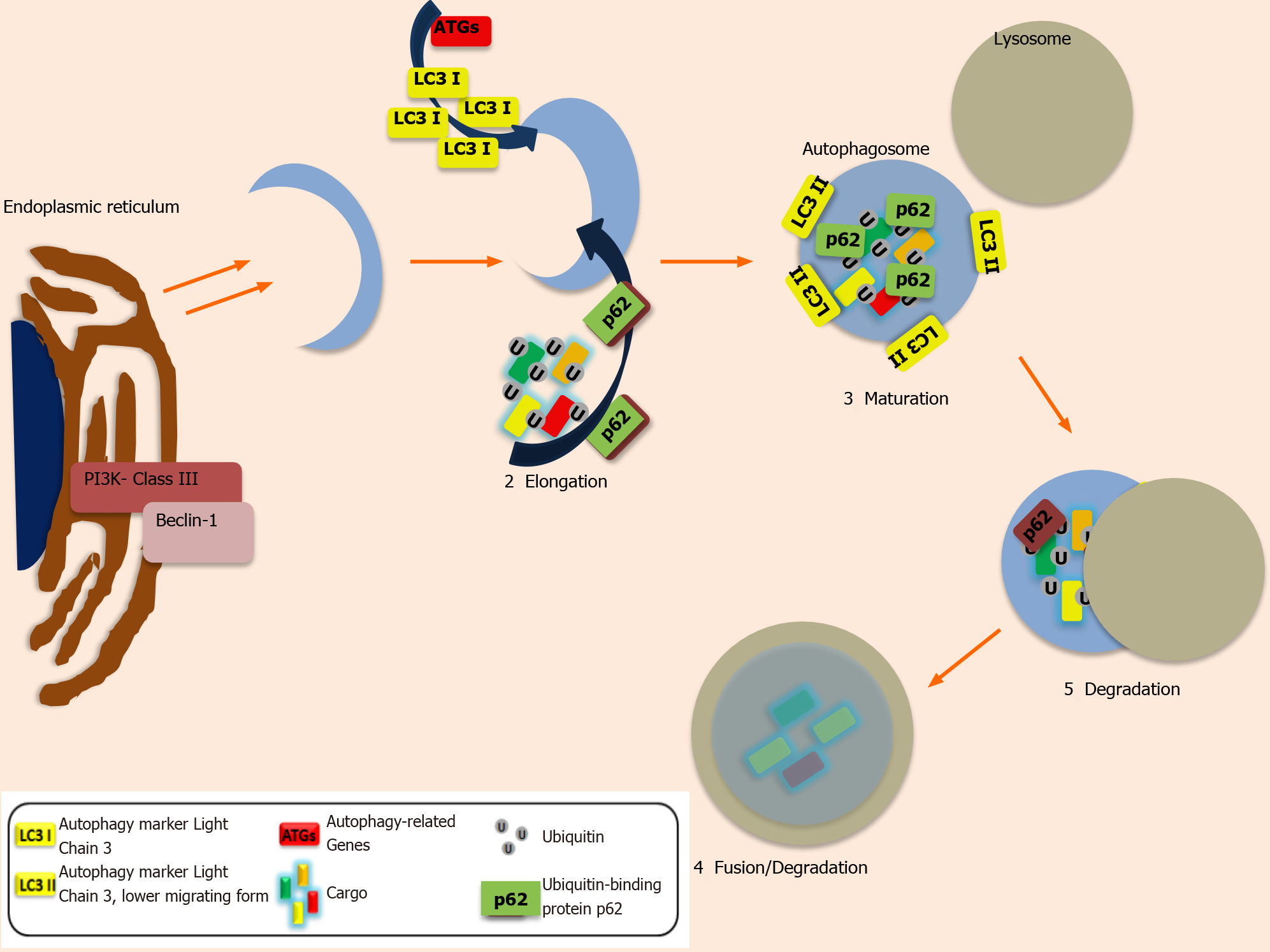Copyright
©The Author(s) 2021.
World J Gastrointest Oncol. Oct 15, 2021; 13(10): 1229-1243
Published online Oct 15, 2021. doi: 10.4251/wjgo.v13.i10.1229
Published online Oct 15, 2021. doi: 10.4251/wjgo.v13.i10.1229
Figure 1 The stages of autophagosome formation.
The autophagy process includes five distinct steps: initiation, elongation, maturation, fusion and degradation. In the first step or initiation (1), the double-membrane structure, the Phagophore, is formed after activation of PI3K-classIII – Beclin-1 complex in endoplasmic reticulum. Elongation (2) is the second step where the new-formed phagophore begin to enclose Ubiquitin-labeled cytosolic cargos such as proteins. A plethora of proteins such as LC3 (LC3-I is conjugated to phosphatidylethanolamine to form LC3-phosphatidylethanolamine conjugate or LC3-II, responsible for the autophagosomal membrane structure), Tags (Autophagy-related genes) and p62 (an adaptor protein responsible for the docking of cargoes) have a key role in the Maturation (3) step where the Autophagosome has already formed. In the fourth step or Fusion/degradation (4) step, the Autophagosome is fused with a Lysosome in order to create the autolysosomes wherein the degradation step (5) the cytosolic cargos are digested from lysosomal enzymes.
- Citation: Koustas E, Trifylli EM, Sarantis P, Papavassiliou AG, Karamouzis MV. Role of autophagy in cholangiocarcinoma: An autophagy-based treatment strategy. World J Gastrointest Oncol 2021; 13(10): 1229-1243
- URL: https://www.wjgnet.com/1948-5204/full/v13/i10/1229.htm
- DOI: https://dx.doi.org/10.4251/wjgo.v13.i10.1229









